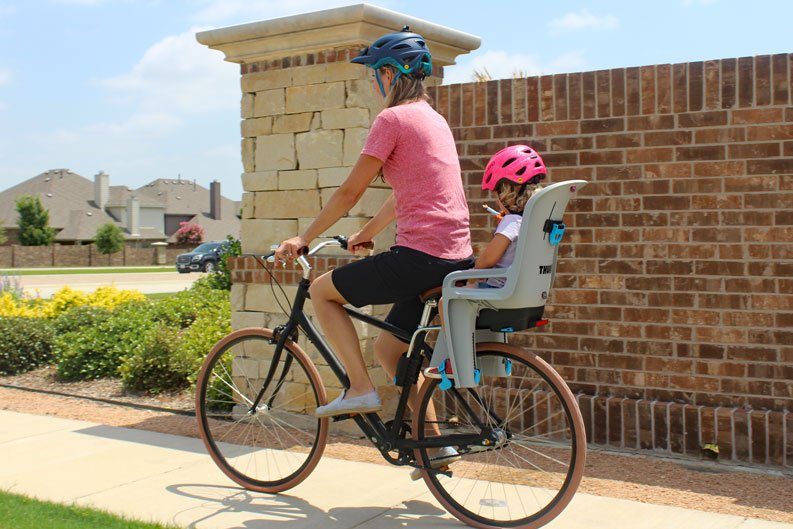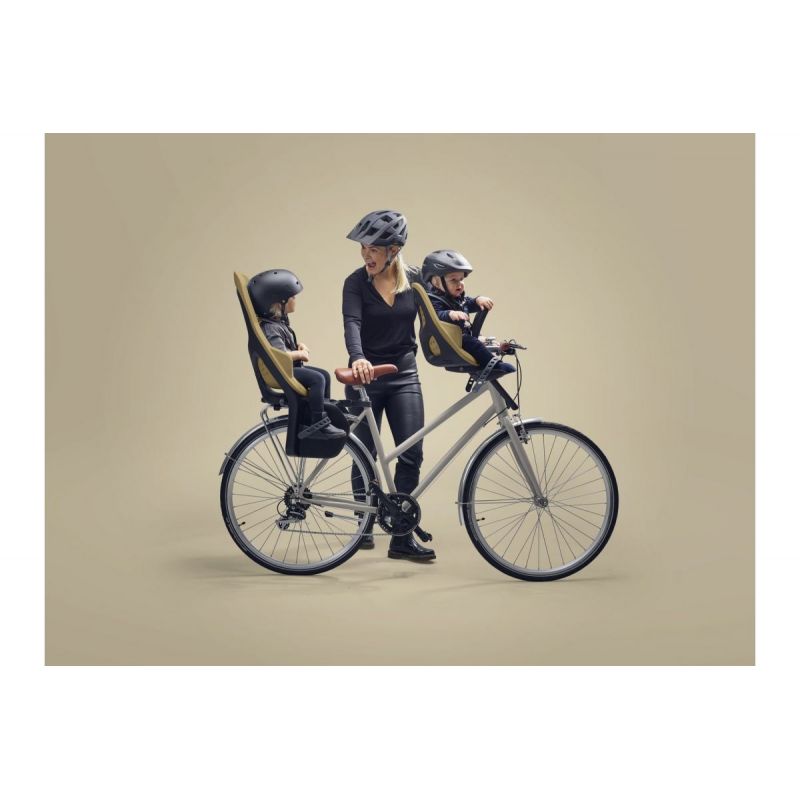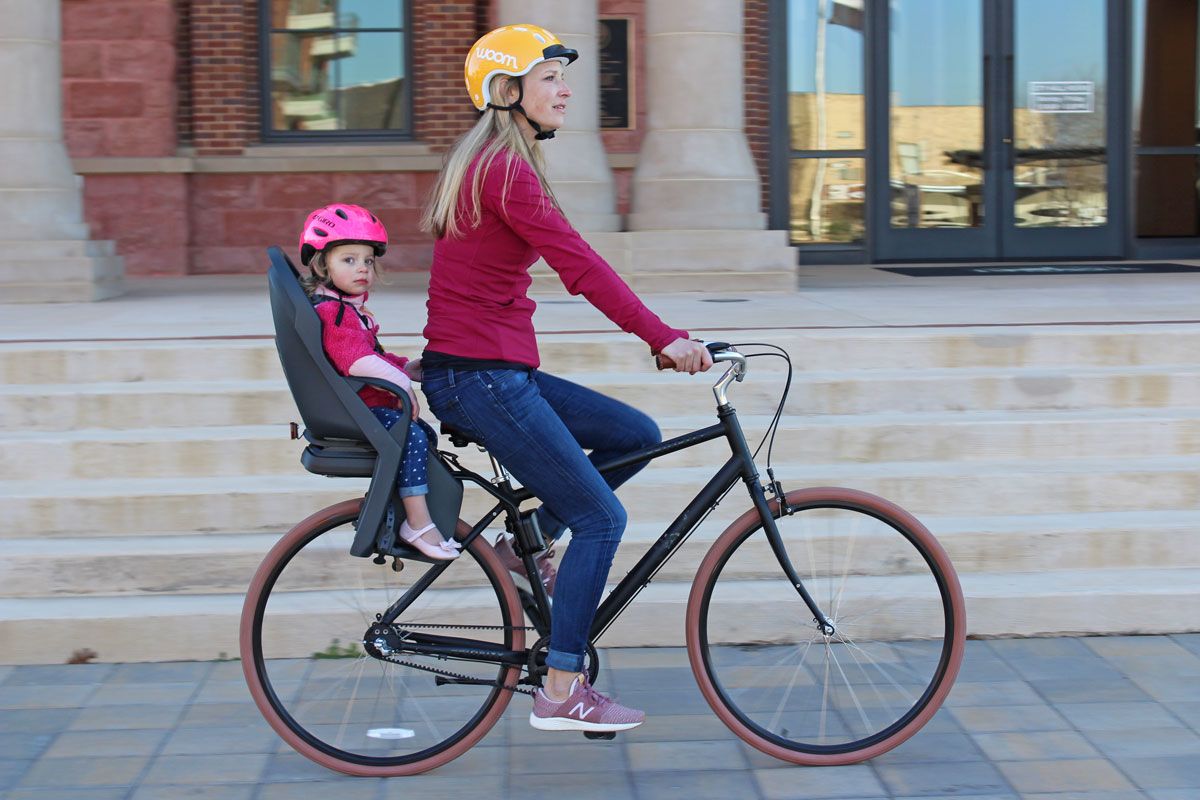Why a Rear Bike Seat is a Must-Have for Family Cycling
Cycling with children can be a fun and rewarding experience, but safety should always be the top priority. A children’s rear bicycle seat provides a secure and comfortable way for kids to enjoy the ride, while also giving parents peace of mind. One of the primary benefits of a rear bike seat is increased visibility, as it allows children to sit up high and see the surroundings, while also making them more visible to other road users.
In addition to enhanced visibility, a rear bike seat can also reduce wind resistance, making it easier for parents to pedal and maintain a steady pace. This can be especially beneficial on longer rides or when cycling with multiple children. Furthermore, a rear bike seat can improve balance and stability, as it provides a lower center of gravity and reduces the likelihood of the bike tipping over.
When choosing a children’s rear bicycle seat, it’s essential to consider factors such as age and weight range, seat style and design, and compatibility with your bike. Look for a seat that is designed for your child’s age and weight group, and ensure that it is compatible with your bike’s make and model. A good quality rear bike seat should also be durable, easy to install, and provide adequate support and comfort for your child.
Some popular brands of children’s rear bicycle seats include Thule and Hamax, which offer a range of seats that cater to different age groups and riding styles. These seats are designed to provide maximum safety and comfort, while also being easy to install and adjust. By investing in a high-quality rear bike seat, parents can enjoy a fun and safe cycling experience with their children.
How to Choose the Perfect Rear Bike Seat for Your Child
When it comes to selecting a children’s rear bicycle seat, there are several factors to consider to ensure you find the perfect one for your child. One of the most important considerations is the age and weight range of your child. Different seats are designed for different age groups, so it’s essential to choose a seat that is suitable for your child’s size and weight.
Another crucial factor to consider is the seat style and design. There are several types of rear bike seats available, including frame-mounted seats, rack-mounted seats, and seatpost-mounted seats. Each type of seat has its own advantages and disadvantages, so it’s essential to research and compare different options to find the one that best suits your needs.
Compatibility with your bike is also a vital consideration. Not all rear bike seats are compatible with all types of bikes, so it’s essential to check the manufacturer’s specifications to ensure the seat you choose is compatible with your bike’s make and model. Popular brands such as Thule and Hamax offer a range of seats that cater to different bike types and styles.
Additionally, consider the features that are important to you and your child. Do you need a seat with a harness system for added safety? Do you prefer a seat with a reclining function for improved comfort? Do you need a seat that is easy to install and adjust? By considering these factors, you can find a children’s rear bicycle seat that meets your needs and provides a safe and comfortable riding experience for your child.
Some other factors to consider when choosing a rear bike seat include the seat’s weight capacity, the type of suspension system used, and the materials used in the seat’s construction. By doing your research and comparing different options, you can find a seat that is durable, comfortable, and safe for your child.
Top Picks: The Best Rear Bike Seats for Kids on the Market
After researching and comparing various rear bike seats, we have selected three top-rated options that stand out for their quality, safety, and comfort. These seats are designed to provide a secure and enjoyable ride for kids, and are suitable for different age groups and riding styles.
The Thule Yepp Maxi is a popular choice among parents, and for good reason. This seat is designed for children aged 1-6 years, and features a sturdy and adjustable design that can accommodate growing kids. The Yepp Maxi also comes with a 5-point harness system and impact protection, providing added safety and peace of mind for parents.
Another top pick is the Hamax Caress, which is designed for children aged 1-4 years. This seat features a sleek and compact design, making it ideal for smaller bikes and tighter spaces. The Caress also comes with a 3-point harness system and reflective materials, providing added visibility and safety.
Last but not least, the Bobike Junior is a great option for older kids who want a more comfortable and stylish ride. This seat is designed for children aged 4-10 years, and features a padded and adjustable design that can accommodate growing kids. The Junior also comes with a 3-point harness system and impact protection, providing added safety and peace of mind for parents.
When choosing a children’s rear bicycle seat, it’s essential to consider factors such as age and weight range, seat style and design, and compatibility with your bike. By doing your research and comparing different options, you can find a seat that meets your needs and provides a safe and comfortable ride for your child.
In addition to these top picks, there are many other great rear bike seats available on the market. When selecting a seat, be sure to read reviews and do your research to ensure you find the best seat for your child’s needs.
Installation and Adjustment: A Step-by-Step Guide
Proper installation and adjustment of a children’s rear bicycle seat is crucial to ensure a safe and comfortable ride for your child. Here is a step-by-step guide to help you install and adjust your rear bike seat:
Step 1: Read the manufacturer’s instructions carefully before starting the installation process. Make sure you understand the specific requirements for your seat and bike.
Step 2: Position the seat on the bike, following the manufacturer’s guidelines. Ensure the seat is securely attached to the bike frame or seatpost.
Step 3: Adjust the seat to the correct height and angle. This will depend on your child’s age, size, and riding style. Refer to the manufacturer’s instructions for specific guidance.
Step 4: Tighten all screws and bolts securely, but avoid over-tightening. Make sure the seat is stable and won’t move during use.
Step 5: Test the seat by lifting it and checking that it is securely attached to the bike. Also, check that the seat is at the correct height and angle for your child.
Step 6: Make any necessary adjustments to the seat or bike to ensure a comfortable and safe ride for your child.
It is essential to follow the manufacturer’s instructions and take your time when installing and adjusting a children’s rear bicycle seat. A properly installed and adjusted seat will provide a safe and comfortable ride for your child, and give you peace of mind as a parent.
Additionally, it is recommended to regularly check the seat and bike to ensure they remain in good condition. This includes checking for any signs of wear and tear, and making any necessary adjustments or repairs.
Rear Bike Seat Safety Features to Look Out For
When choosing a children’s rear bicycle seat, safety should be the top priority. There are several key safety features to look out for to ensure a secure and comfortable ride for your child. One of the most important safety features is a harness system, which helps to keep your child securely in place while riding.
Impact protection is another crucial safety feature to consider. This can include features such as padded seats, shock-absorbing materials, and reinforced frames. These features can help to reduce the risk of injury in the event of a crash or fall.
Reflective materials are also an important safety feature to look out for. These materials can help to increase visibility while riding, especially in low-light conditions. Many rear bike seats come with reflective strips or logos that can help to make your child more visible to other road users.
Other safety features to consider when choosing a children’s rear bicycle seat include adjustable seats, secure attachment systems, and durable construction. By looking out for these safety features, you can help to ensure a safe and comfortable ride for your child.
In addition to these safety features, it’s also important to consider the overall design and construction of the seat. A well-designed seat should be sturdy, durable, and easy to use. It should also be comfortable for your child, with features such as padded seats and adjustable footrests.
By considering these safety features and design elements, you can help to ensure a safe and enjoyable ride for your child. Remember to always follow the manufacturer’s instructions for installation and use, and to regularly check the seat for any signs of wear or damage.
Real-Life Experiences: What Parents Say About Rear Bike Seats
We spoke to several parents who have used rear bike seats to get their honest opinions and feedback. Here’s what they had to say:
“I was a bit skeptical about using a rear bike seat at first, but it’s been a game-changer for our family. My child loves riding on the back of the bike and it’s so much easier for me to keep an eye on them.” – Sarah, mother of two
“I’ve tried a few different rear bike seats and I have to say, the Thule Yepp Maxi is my favorite. It’s so easy to install and adjust, and my child feels safe and secure.” – John, father of three
“I was worried about the safety of rear bike seats, but after doing some research and reading reviews, I felt confident in my decision to purchase one. It’s been a great investment for our family and we use it all the time.” – Emily, mother of one
These testimonials and reviews from parents who have used rear bike seats can help build trust and credibility with readers. They provide real-life examples of the benefits and advantages of using a rear bike seat, and can help to alleviate any concerns or doubts that readers may have.
In addition to these testimonials, we also gathered some feedback from parents on what they like and dislike about rear bike seats. Some common themes that emerged include:
* Ease of installation and adjustment
* Safety features such as harness systems and impact protection
* Comfort and support for the child
* Durability and quality of construction
By considering these factors and reading reviews from other parents, readers can make an informed decision when choosing a rear bike seat for their child.
Tips for a Smooth Ride: How to Ensure a Comfortable Experience for Your Child
To ensure a comfortable and enjoyable ride for your child, there are several tips to keep in mind. First, make sure your child is dressed in comfortable clothing and shoes that won’t get caught in the pedals or chain. You should also consider bringing snacks and water to keep your child energized and hydrated during the ride.
Entertainment is also important to consider. You can bring along toys, games, or books to keep your child occupied during the ride. Some rear bike seats even come with built-in entertainment systems, such as speakers or tablets.
Regular breaks are also essential to ensure a comfortable ride for your child. You should plan to stop every 10-15 minutes to let your child stretch their legs and get some fresh air. This will also give you a chance to check the seat and make any necessary adjustments.
As your child grows, you’ll need to adjust the seat to accommodate their changing size. This may involve adjusting the height and angle of the seat, as well as the position of the footrests. By making these adjustments, you can ensure a comfortable and safe ride for your child.
In addition to these tips, there are several other things to consider when choosing a children’s rear bicycle seat. Look for a seat that is designed for your child’s age and weight range, and that is compatible with your bike. You should also consider the safety features of the seat, such as harness systems and impact protection.
By following these tips and considering these factors, you can ensure a comfortable and enjoyable ride for your child. Remember to always prioritize your child’s safety and comfort, and to make adjustments as needed to ensure a smooth ride.
Maintenance and Storage: Keeping Your Rear Bike Seat in Top Condition
To ensure your children’s rear bicycle seat remains safe and secure, regular maintenance and proper storage are essential. Here are some tips to help you keep your seat in top condition:
Cleaning: Regularly clean your rear bike seat to remove dirt, dust, and other debris that can accumulate and affect its performance. Use a soft cloth and mild soap to wipe down the seat, and avoid using harsh chemicals or abrasive materials that can damage the seat’s finish.
Lubricating: Lubricate the moving parts of your rear bike seat, such as the hinges and adjustment mechanisms, to keep them running smoothly and prevent corrosion. Use a silicone-based lubricant and apply it sparingly to avoid attracting dirt and dust.
Protecting from the elements: Protect your rear bike seat from the elements by storing it in a dry, secure location when not in use. Avoid exposing the seat to direct sunlight, heavy rain, or extreme temperatures, as this can cause damage to the seat’s materials and affect its performance.
Regular checks: Regularly inspect your rear bike seat for any signs of wear or damage, such as cracks, dents, or loose parts. Make any necessary repairs or adjustments to ensure the seat remains safe and secure.
By following these maintenance and storage tips, you can help extend the life of your children’s rear bicycle seat and ensure it remains safe and secure for your child to use. Remember to always follow the manufacturer’s instructions for maintenance and storage, and to consult the user manual if you have any questions or concerns.









